

  |
Skip this page if you are not installing this agent on a Windows cluster.
Click  to continue with the
deployment.
to continue with the
deployment.
Where to Install |
Before You Begin |
| Install the Oracle iDataAgent on the Oracle server that you want to protect and is part of a Cluster which satisfies the minimum requirements specified in the System Requirements. |
Download the latest software package to perform the install. Make sure that the computer in which you wish to install the software satisfies the System Requirements. |
The Oracle iDataAgent installation may require a system reboot if a pending rename operation from a previously installed application is found in the operating system, hence, plan your installation at a convenient time.
| 1. | Log on to the active node as the Domain User with administrative privileges to all nodes on the cluster. | |||
| 2. | Run Setup.exe from the Software Installation Package. | |||
| 3. |
Select the required language. Click Next. |
 |
||
| 4. |
Select the option to install software on this computer.
|
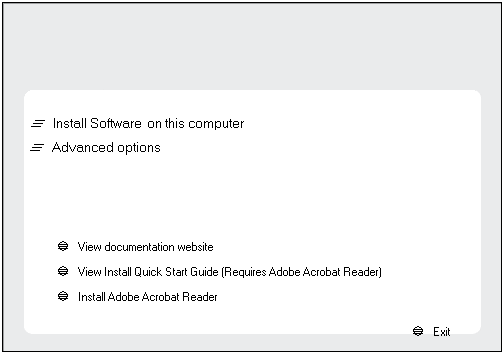 |
||
| 5. |
Select I accept the terms in the license agreement. Click Next. |
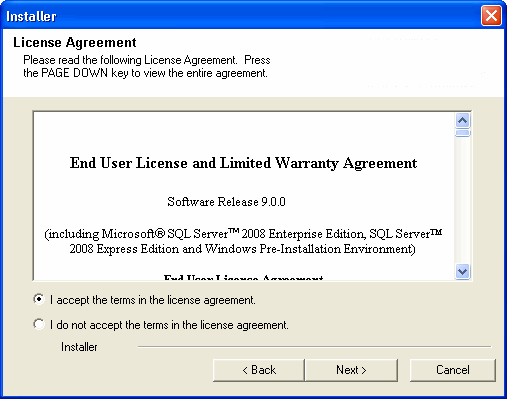 |
||
| 6. |
Select Configure a Virtual Server. Click Next. |
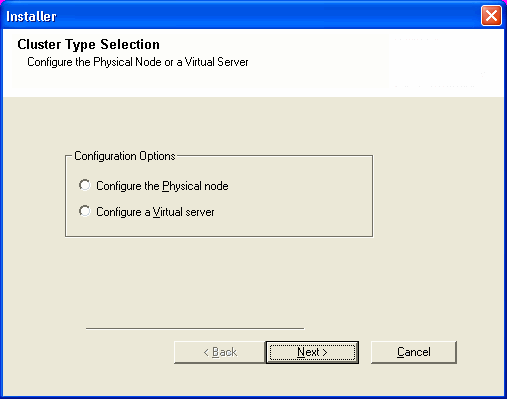 |
||
| 7. | Select the disk group in which the virtual server resides. Click Next. |
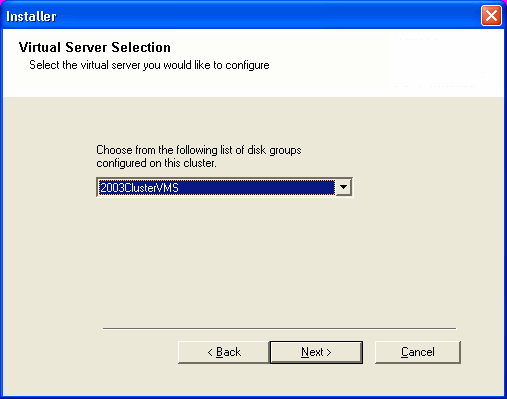 |
||
| 8. | Expand Client Modules | Backup and Recovery
| Database and select Oracle iDataAgent. Click Next. |
 |
||
| 9. |
If this computer and the CommServe is separated by a firewall, select the Configure
firewall services option and then click Next.
For firewall options and configuration instructions, see Firewall Configuration and continue with the installation. If firewall configuration is not required, click Next. |
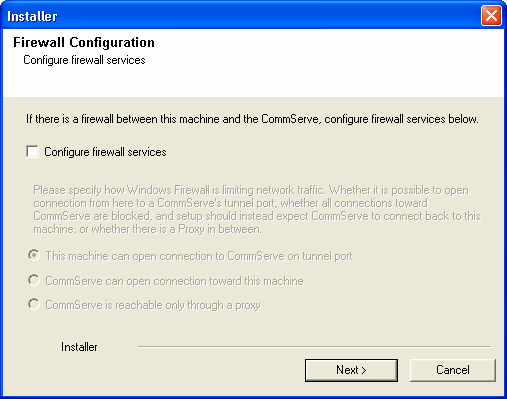 |
||
| 10. |
Enter the fully qualified domain name of the CommServe
Host Name. Click Next.
|
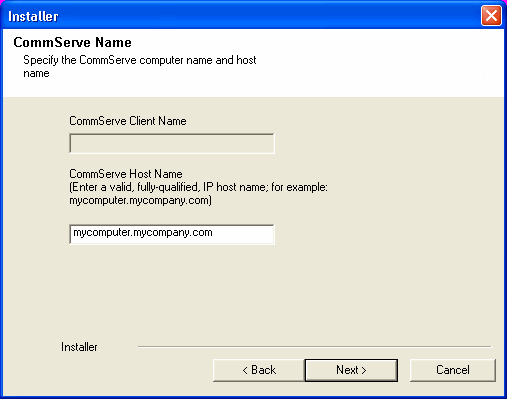 |
||
| 11. | Specify the name of the Cluster Group Client. Click Next. |
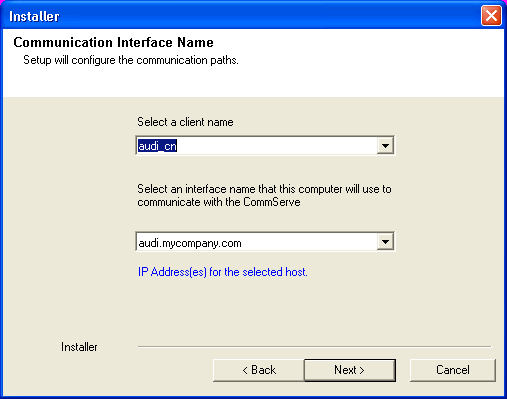 |
||
| 12. | Select the name of the Physical Machine from drop-down
list. Click Next. |
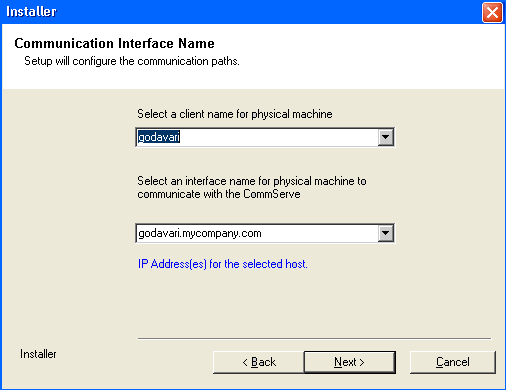 |
||
| 13. |
Select Add programs to the Windows Firewall Exclusion
List, to add CommCell programs and services to the Windows Firewall
Exclusion List. Click Next.
|
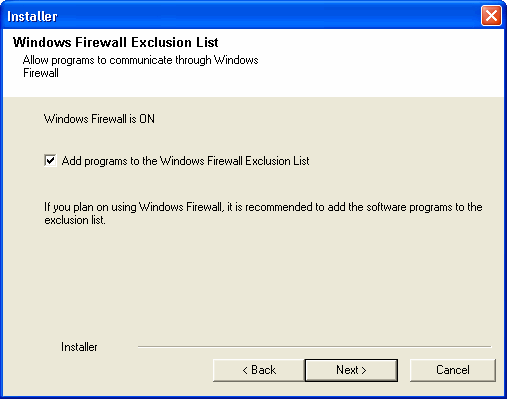 |
||
| 14. |
Verify the default location for software installation. Click Browse to change the default location. Click Next.
|
 |
||
| 15. | Verify the default location for Job Results Path. Click Browse to change the default location. Click Next. |
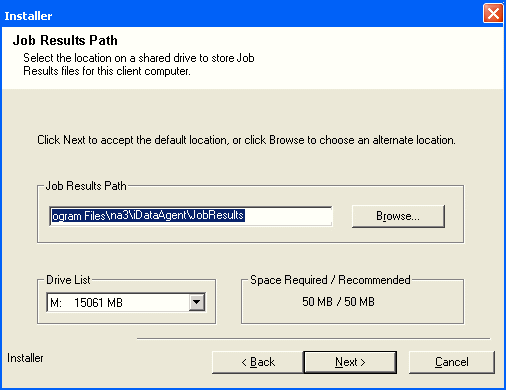 |
||
| 16. |
Select a Client Group from the list. Click Next.
|
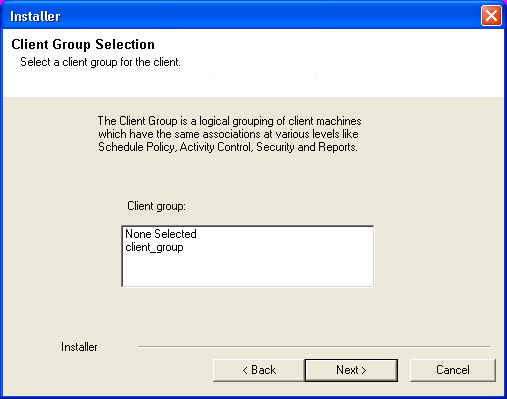 |
||
| 17. | Click Next. |
 |
||
| 18. | Click Next. |
 |
||
| 19. | Select a Storage Policy from the drop-down list. Click Next. |
 |
||
| If you do not have Storage Policy created, this message
will be displayed. Click Next.
|
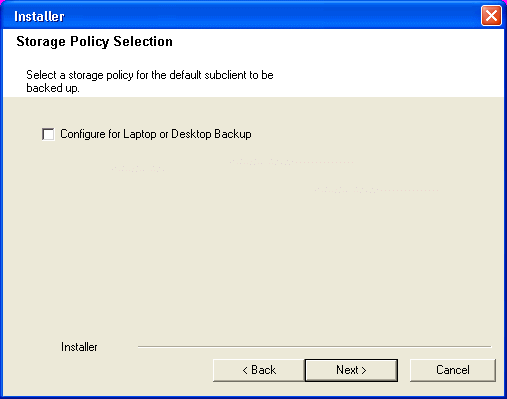 |
|||
| 20. | Click Next.
|
 |
||
| 21. | Click Next.
|
 |
||
| 22. | Click Next. |
 |
||
| 23. |
Click OK. |
 |
||
| 24. | Click Yes. |
 |
||
| 25. |
Select cluster nodes from the Preferred Nodes list and click the arrow
button to move them to the Selected Nodes list. Once you complete your selections, click Next.
|
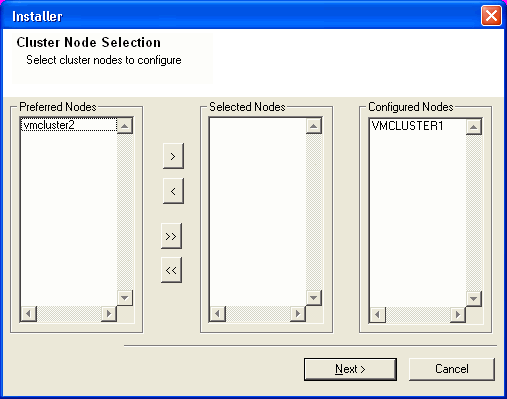 |
||
| 26. |
Specify User Name and Password for the Domain Administrator
account Information to perform the remote install on the cluster
nodes you selected in the previous step. Click Next. |
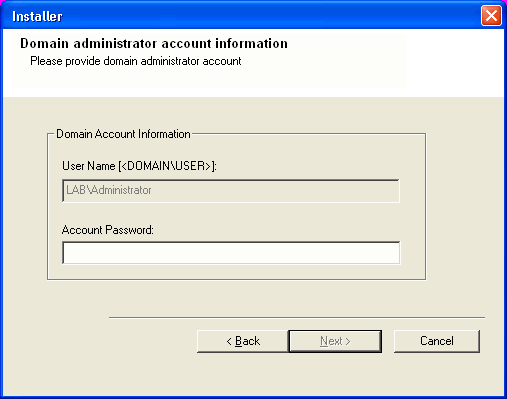 |
||
| 27. |
The progress of the remote install for the cluster nodes is displayed; the
install can be
interrupted if necessary.
Click Stop to prevent installation to any nodes after the current ones complete. Click Advanced Settings to specify any of the following:
|
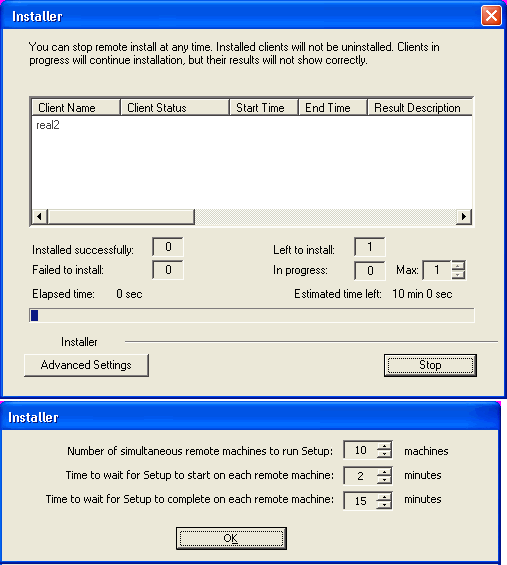 |
||
| 28. |
Read the summary for remote installation to verify that all selected nodes were installed
successfully. Click Next.
|
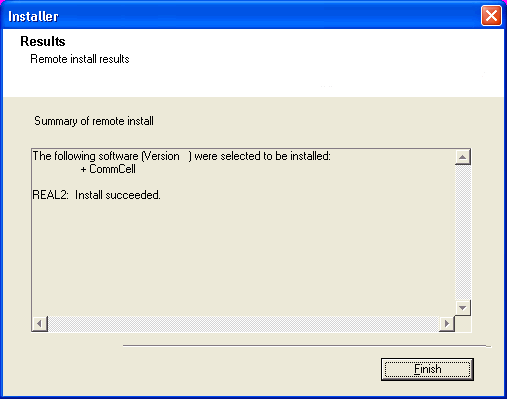 |
||
| 29. | Click Next. |
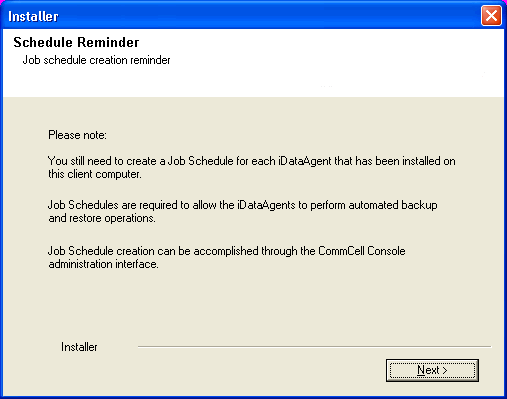 |
||
| 30. | Click Finish. |
 |
||
 |
If you already have a storage policy selected in
step 19, proceed to the
Configuration section. If you do not have Storage Policy created, continue with the following step. |
|||
| 31. | To create a storage policy, you must have configured a
library in the CommCell.
|
|||
DISK LIBRARY CREATION:
This will create a library and Storage Policy. Click the
|
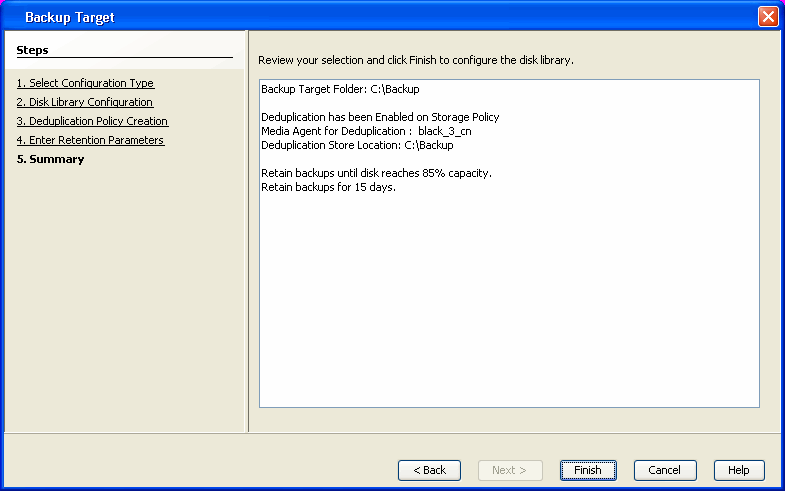 |
|||
Storage Policy Creation:
This will create a storage policy. Click the
|
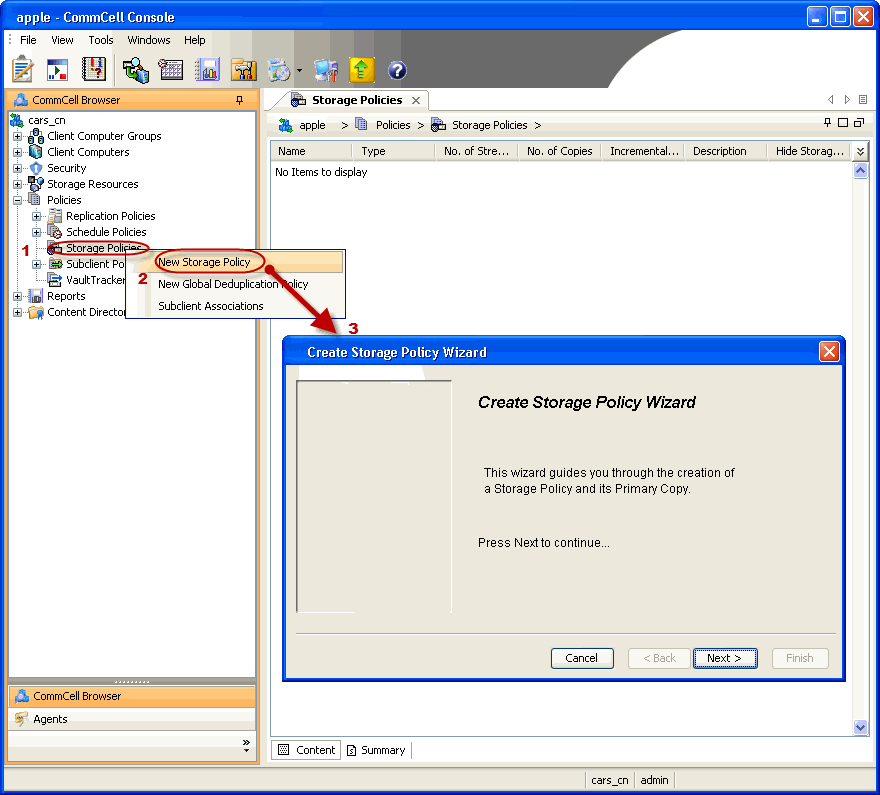 |
  |